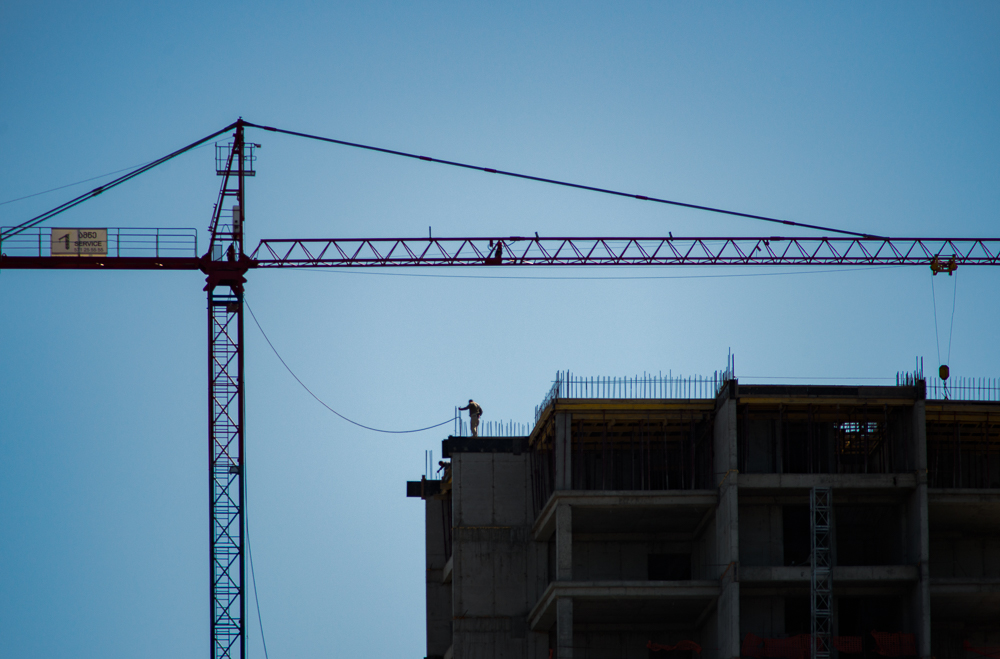
In pictures | Georgia’s deadly construction sites
Despite a new labour safety bill, Georgia’s construction sites remain a deathtrap for workers.
In pictures | Georgia’s deadly construction sites
 7 November 2018
7 November 2018

In October, a construction worker in Rustavi who fell from the fourth floor was delivered to the hospital unconsciousness, with an open fracture and heavy bleeding. He later died of his injuries.
Batumi, a resort and port city on Georgia’s Black Sea coast and capital of Adjara Region, recorded the most accidents on construction sites so far this year — of the 14 deaths and 16 serious injuries in Georgia known to the Georgian Trade Unions Confederation, most took place in Adjara.
A new labour safety bill passed on 21 March was supposed to reduce the risks on work sites by applying stricter regulations and technically expanding the mandate of safety inspectors.
But statistics from the Trade Unions Confederation only show a drop in the number of accidents in Tbilisi since the law came in.
Even in Tbilisi, where fines for health and safety violations were raised dramatically in February by new mayor Kakha Kaladze, both employers and employees regularly neglect basic occupational health and safety rules.
Changes to Tbilisi’s Product Safety and Free Movement Code raised fines for employers to ₾30,000 lari ($11,000) for the very first offence.
Workplaces are monitored for health and safety violations by safety inspectors who, according to the new labour safety bill, can only make a single visit to a workplace per year. Additional monitoring is only possible with a court order or after an accident.
In an appeal to parliament and several related committees, local rights group the Human Rights Education and Monitoring Centre (EMC) argued that this is a serious omission in the law as it contradicts the standards of the International Labour Organisation (ILO), which Georgia signed up to as part of its Association Agreement with the EU.
According to Nika Kakashvili from the Trade Unions Confederation, inspectors can only investigate direct environmental hazards, but not other factors connected to occupational safety.
‘For instance, inspectors don’t monitor unregulated working hours. Overworked employees frequently make fatal mistakes.’
Technical Regulations on Safety Requirements for work at height:









Kakashvili, who monitors workplaces for the union, says it’s hard for them to access most construction sites.
‘We only have the right to go to sites where our members work. A big problem in this industry is the short-term contracts, which makes it difficult to register members.’
According to the union’s statistics, there have been 14 deaths and 16 heavy injuries on the construction sites this year.
‘These numbers are a minimum though’, Kakashvili says. ‘We get them from the media or via private connections, however, there are a large number of cases that remain beyond our reach. At least half of the victims choose not to appeal.’
Marina Kurtanidze, chairperson of the Georgian Constructors and Foresters Independent Trade Union explains why workers prefer to stay silent.
‘After an accident, companies are quick to offer a single payout on the condition they keep quiet. Employees don’t realise that this single deal in most cases is not even the minimum of what they could get if they went to court.’
‘We, as a union, can help them appeal for decent compensation that could last for years, but they prefer a single fast payout or a promise of a better position or employment for a family member.
Most problems appear in collective and individual protection measures on the high floors of construction sites, according to Kakashvili.
Collective protection includes keeping the floors securely closed — if there is no appropriate fencing or safety nets, this is a violation. The same is true of stairs and lift shafts — all possible places where a person could fall.
Sometimes, it is not possible to implement collective safety measures, for example, when pumping concrete to the roof. In these cases, individual protection should be used — workers should be wearing safety harnesses.
Another simple, yet commonly neglected rule is wearing safety helmets on site.
‘Even though many of these measures are individual, it is still the responsibility of the employer to enforce them with appropriate mechanisms. There’s a general indifference towards employees, and when accidents occur, responsibility is generally laid on the lower level management, such as the foreman, who is easy to replace.








This article was prepared with support from the Friedrich-Ebert-Stiftung (FES) Regional Office in the South Caucasus. All opinions expressed are the author’s alone and do not necessarily reflect the views of FES.







